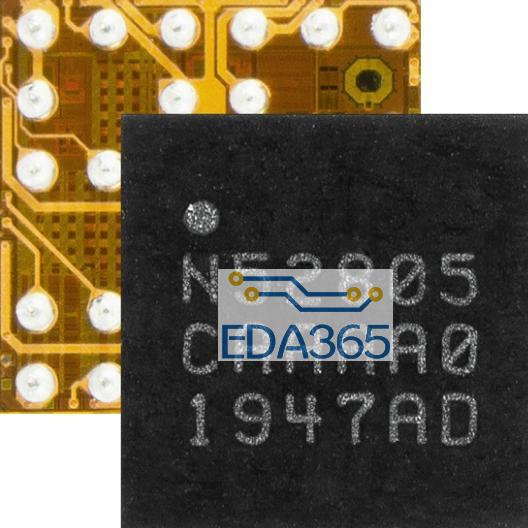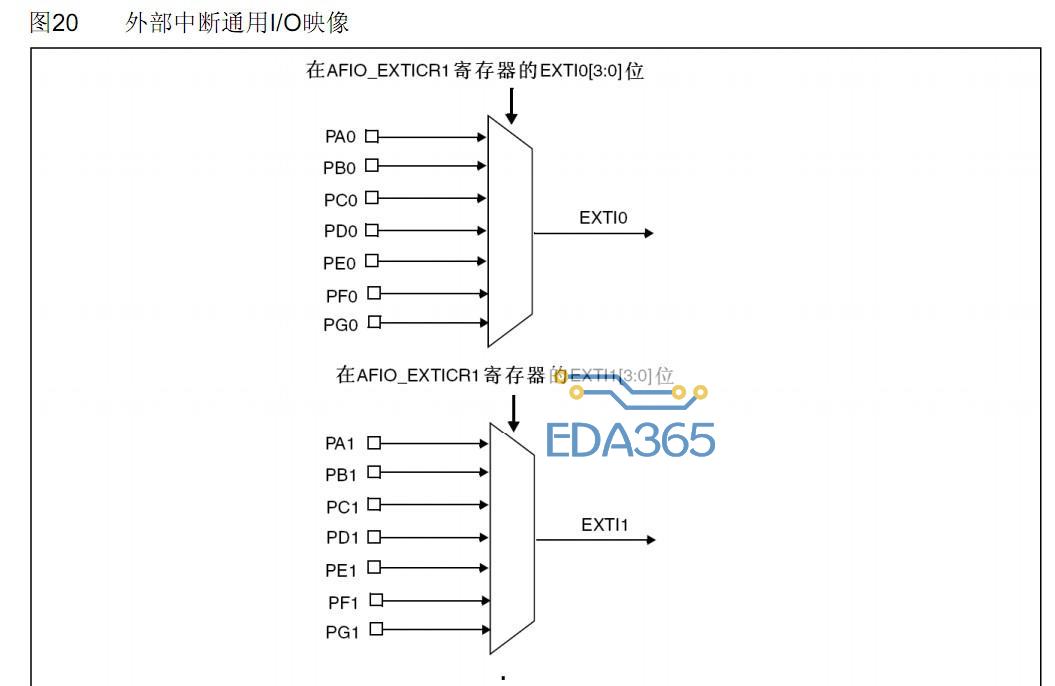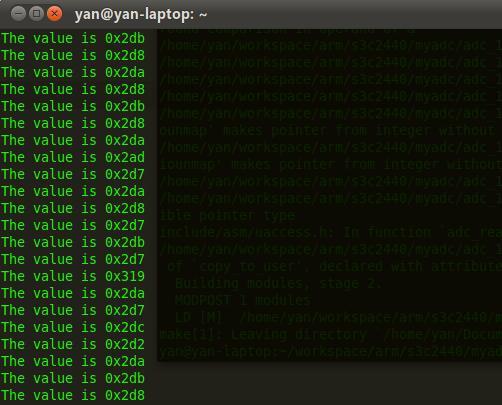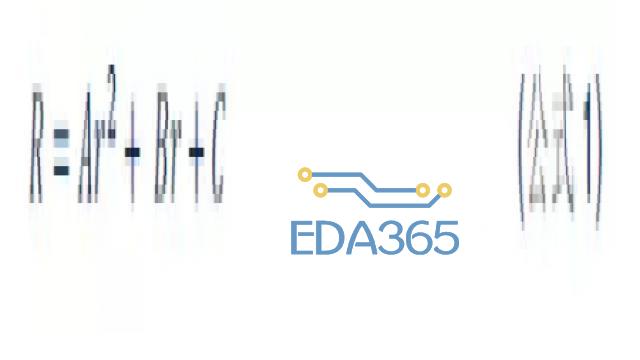SPL是uboot第一阶段执行的代码。 主要负责搬移uboot第二阶段的代码到内存中运行。 SPL是由固化在芯片内部的ROM引导的。 我们知道很多芯片厂商固化的ROM支持从nandflash, SDCARD等外部介质启动。
所谓启动, 就是从这些外部介质中搬移一段固定大小(4K/8K/16K等)的代码到内部RAM中运行。 这里搬移的就是SPL. 在最新版本的uboot中, 可以看到SPL也支持nandflash, SDCARD等多种启动方式。 当SPL本身被搬移到内部RAM中运行时, 它会从nandflash, SDCARD等外部介质中搬移uboot第二阶段的代码到外部内存中。
当我们在uboot下执行make命令的时候, 它最核心的功能是执行Makefile中的all目标编译出相应的文件。 我们来看看这个all目标
[plain] view plaincopyall: $(ALL-y) $(SUBDIR_EXAMPLES)
[plain] view plain copyall: $(ALL-y) $(SUBDIR_EXAMPLES)
all依赖于$(ALL-y) 和 $(SUBDIR_EXAMPLES), 这里我只关注ALL-y, 如下:
[plain] view plaincopy# Always append ALL so that arch config.mk‘s can add custom ones
ALL-y += $(obj)u-boot.srec $(obj)u-boot.bin $(obj)System.map
ALL-$(CONFIG_NAND_U_BOOT) += $(obj)u-boot-nand.bin
ALL-$(CONFIG_ONENAND_U_BOOT) += $(obj)u-boot-onenand.bin
ALL-$(CONFIG_SPL) += $(obj)spl/u-boot-spl.bin
ALL-$(CONFIG_SPL_FRAMEWORK) += $(obj)u-boot.img
ALL-$(CONFIG_TPL) += $(obj)tpl/u-boot-tpl.bin
ALL-$(CONFIG_OF_SEPARATE) += $(obj)u-boot.dtb $(obj)u-boot-dtb.bin
ifneq ($(CONFIG_SPL_TARGET),)
ALL-$(CONFIG_SPL) += $(obj)$(subst “,,$(CONFIG_SPL_TARGET))
endif
# enable combined SPL/u-boot/dtb rules for tegra
ifneq ($(CONFIG_TEGRA),)
ifeq ($(CONFIG_OF_SEPARATE),y)
ALL-y += $(obj)u-boot-dtb-tegra.bin
else
ALL-y += $(obj)u-boot-nodtb-tegra.bin
endif
endif
[plain] view plain copy# Always append ALL so that arch config.mk’s can add custom ones
ALL-y += $(obj)u-boot.srec $(obj)u-boot.bin $(obj)System.map
ALL-$(CONFIG_NAND_U_BOOT) += $(obj)u-boot-nand.bin
ALL-$(CONFIG_ONENAND_U_BOOT) += $(obj)u-boot-onenand.bin
ALL-$(CONFIG_SPL) += $(obj)spl/u-boot-spl.bin
ALL-$(CONFIG_SPL_FRAMEWORK) += $(obj)u-boot.img
ALL-$(CONFIG_TPL) += $(obj)tpl/u-boot-tpl.bin
ALL-$(CONFIG_OF_SEPARATE) += $(obj)u-boot.dtb $(obj)u-boot-dtb.bin
ifneq ($(CONFIG_SPL_TARGET),)
ALL-$(CONFIG_SPL) += $(obj)$(subst ”,,$(CONFIG_SPL_TARGET))
endif
# enable combined SPL/u-boot/dtb rules for tegra
ifneq ($(CONFIG_TEGRA),)
ifeq ($(CONFIG_OF_SEPARATE),y)
ALL-y += $(obj)u-boot-dtb-tegra.bin
else
ALL-y += $(obj)u-boot-nodtb-tegra.bin
endif
endif

因为本节是讨论SPL, 所以我们只关注其中的一句ALL-$(CONFIG_SPL) += $(obj)spl/u-boot-spl.bin
这句话表明
必须定义CONFIG_SPL才能编译出spl的bin: 一般在“include/configs/${CONFIG_NAME}.h”中定义
SPL的bin依赖于u-boot-spl.bin
接着往下看
[plain] view plaincopy$(obj)spl/u-boot-spl.bin: $(SUBDIR_TOOLS) depend
$(MAKE) -C spl all
[plain] view plain copy$(obj)spl/u-boot-spl.bin: $(SUBDIR_TOOLS) depend
$(MAKE) -C spl all
这里可以发现, u-boot-spl.bin依赖于 $(SUBDIR_TOOLS) depend
$(SUBDIR_TOOLS) : 暂不分析
depend: 参考附录中的depend
进入spl目录, 执行make all
接下来进入spl目录, 看看它的Makefile : 这里只分析与SPL相关的部分
[plain] view plaincopyCONFIG_SPL_BUILD := y
export CONFIG_SPL_BUILD
[plain] view plain copyCONFIG_SPL_BUILD := y
export CONFIG_SPL_BUILD
export CONFIG_SPL_BUILD: 在接下来的编译中, 这个变量为y. 从后面的分析中可以看到, uboot的stage1, stage2阶段的代码用的是同一个Start.S, 只不过在Start.S中用#ifdef CONFIG_SPL_BUILD这种条件编译来区分。 类似的还有其他一些文件。
[plain] view plaincopyHAVE_VENDOR_COMMON_LIB = $(if $(wildcard $(SRCTREE)/board/$(VENDOR)/common/Makefile),y,n)
[plain] view plain copyHAVE_VENDOR_COMMON_LIB = $(if $(wildcard $(SRCTREE)/board/$(VENDOR)/common/Makefile),y,n)
[cpp] view plaincopy如果board/$(VENDOR)/common目录中有Makefile文件,则HAVE_VENDOR_COMMON_LIB为y否则为n
[cpp] view plain copy如果board/$(VENDOR)/common目录中有Makefile文件,则HAVE_VENDOR_COMMON_LIB为y否则为n
[plain] view plaincopyifdef CONFIG_SPL_START_S_PATH
START_PATH := $(subst “,,$(CONFIG_SPL_START_S_PATH))
else
START_PATH := $(CPUDIR)
endif
[plain] view plain copyifdef CONFIG_SPL_START_S_PATH
START_PATH := $(subst ”,,$(CONFIG_SPL_START_S_PATH))
else
START_PATH := $(CPUDIR)
endif
我们这里没有定义CONFIG_SPL_START_S_PATH, 所以START_PATH := $(CPUDIR)
[plain] view plaincopySTART := $(START_PATH)/start.o
[plain] view plain copySTART := $(START_PATH)/start.o
依赖start.o, 综合来看, 就是要把CPUDIR下的start.S编译进来。
[plain] view plaincopyLIBS-y += arch/$(ARCH)/lib/lib$(ARCH).o
[plain] view plain copyLIBS-y += arch/$(ARCH)/lib/lib$(ARCH).o
依赖lib$(ARCH).o, 具体来看, 就是依赖arch/arm/lib/libarm.o
[plain] view plaincopyLIBS-y += $(CPUDIR)/lib$(CPU).o
[plain] view plain copyLIBS-y += $(CPUDIR)/lib$(CPU).o
依赖lib$(CPU).o, 具体来看, 就是依赖arch/arm/cpu/armv7/libarmv7.o
[plain] view plaincopyifdef SOC
LIBS-y += $(CPUDIR)/$(SOC)/lib$(SOC).o
endif
[plain] view plain copyifdef SOC
LIBS-y += $(CPUDIR)/$(SOC)/lib$(SOC).o
endif
如果定义了SOC, 则依赖lib$(SOC).o, 具体来看, 就是依赖arch/arm/cpu/s5pc1xx/libs5pc1xx.o
[plain] view plaincopyLIBS-y += board/$(BOARDDIR)/lib$(BOARD).o
[plain] view plain copyLIBS-y += board/$(BOARDDIR)/lib$(BOARD).o
依赖lib$(BOARD).o, 具体来看, 就是依赖board/samsung/tiny210/libtiny210.o
[plain] view plaincopyLIBS-$(HAVE_VENDOR_COMMON_LIB) += board/$(VENDOR)/common/lib$(VENDOR).o
[plain] view plain copyLIBS-$(HAVE_VENDOR_COMMON_LIB) += board/$(VENDOR)/common/lib$(VENDOR).o
如果HAVE_VENDOR_COMMON_LIB为y, 则依赖lib$(VENDOR).o, 具体来看, 就是依赖board/samsung/common/libsamsung.o
[plain] view plaincopyLIBS-$(CONFIG_SPL_FRAMEWORK) += common/spl/libspl.o
LIBS-$(CONFIG_SPL_LIBCOMMON_SUPPORT) += common/libcommon.o
LIBS-$(CONFIG_SPL_LIBDISK_SUPPORT) += disk/libdisk.o
LIBS-$(CONFIG_SPL_I2C_SUPPORT) += drivers/i2c/libi2c.o
LIBS-$(CONFIG_SPL_GPIO_SUPPORT) += drivers/gpio/libgpio.o
LIBS-$(CONFIG_SPL_MMC_SUPPORT) += drivers/mmc/libmmc.o
LIBS-$(CONFIG_SPL_SERIAL_SUPPORT) += drivers/serial/libserial.o
LIBS-$(CONFIG_SPL_SPI_FLASH_SUPPORT) += drivers/mtd/spi/libspi_flash.o
LIBS-$(CONFIG_SPL_SPI_SUPPORT) += drivers/spi/libspi.o
LIBS-$(CONFIG_SPL_FAT_SUPPORT) += fs/fat/libfat.o
LIBS-$(CONFIG_SPL_LIBGENERIC_SUPPORT) += lib/libgeneric.o
LIBS-$(CONFIG_SPL_POWER_SUPPORT) += drivers/power/libpower.o \
drivers/power/pmic/libpmic.o
LIBS-$(CONFIG_SPL_NAND_SUPPORT) += drivers/mtd/nand/libnand.o
LIBS-$(CONFIG_SPL_ONENAND_SUPPORT) += drivers/mtd/onenand/libonenand.o
LIBS-$(CONFIG_SPL_DMA_SUPPORT) += drivers/dma/libdma.o
LIBS-$(CONFIG_SPL_POST_MEM_SUPPORT) += post/drivers/memory.o
LIBS-$(CONFIG_SPL_NET_SUPPORT) += net/libnet.o
LIBS-$(CONFIG_SPL_ETH_SUPPORT) += drivers/net/libnet.o
LIBS-$(CONFIG_SPL_ETH_SUPPORT) += drivers/net/phy/libphy.o
LIBS-$(CONFIG_SPL_USBETH_SUPPORT) += drivers/net/phy/libphy.o
LIBS-$(CONFIG_SPL_MUSB_NEW_SUPPORT) += drivers/usb/musb-new/libusb_musb-new.o
LIBS-$(CONFIG_SPL_USBETH_SUPPORT) += drivers/usb/gadget/libusb_gadget.o
LIBS-$(CONFIG_SPL_WATCHDOG_SUPPORT) += drivers/watchdog/libwatchdog.o
[plain] view plain copyLIBS-$(CONFIG_SPL_FRAMEWORK) += common/spl/libspl.o
LIBS-$(CONFIG_SPL_LIBCOMMON_SUPPORT) += common/libcommon.o
LIBS-$(CONFIG_SPL_LIBDISK_SUPPORT) += disk/libdisk.o
LIBS-$(CONFIG_SPL_I2C_SUPPORT) += drivers/i2c/libi2c.o
LIBS-$(CONFIG_SPL_GPIO_SUPPORT) += drivers/gpio/libgpio.o
LIBS-$(CONFIG_SPL_MMC_SUPPORT) += drivers/mmc/libmmc.o
LIBS-$(CONFIG_SPL_SERIAL_SUPPORT) += drivers/serial/libserial.o
LIBS-$(CONFIG_SPL_SPI_FLASH_SUPPORT) += drivers/mtd/spi/libspi_flash.o
LIBS-$(CONFIG_SPL_SPI_SUPPORT) += drivers/spi/libspi.o
LIBS-$(CONFIG_SPL_FAT_SUPPORT) += fs/fat/libfat.o
LIBS-$(CONFIG_SPL_LIBGENERIC_SUPPORT) += lib/libgeneric.o
LIBS-$(CONFIG_SPL_POWER_SUPPORT) += drivers/power/libpower.o \
drivers/power/pmic/libpmic.o
LIBS-$(CONFIG_SPL_NAND_SUPPORT) += drivers/mtd/nand/libnand.o
LIBS-$(CONFIG_SPL_ONENAND_SUPPORT) += drivers/mtd/onenand/libonenand.o
LIBS-$(CONFIG_SPL_DMA_SUPPORT) += drivers/dma/libdma.o
LIBS-$(CONFIG_SPL_POST_MEM_SUPPORT) += post/drivers/memory.o
LIBS-$(CONFIG_SPL_NET_SUPPORT) += net/libnet.o
LIBS-$(CONFIG_SPL_ETH_SUPPORT) += drivers/net/libnet.o
LIBS-$(CONFIG_SPL_ETH_SUPPORT) += drivers/net/phy/libphy.o
LIBS-$(CONFIG_SPL_USBETH_SUPPORT) += drivers/net/phy/libphy.o
LIBS-$(CONFIG_SPL_MUSB_NEW_SUPPORT) += drivers/usb/musb-new/libusb_musb-new.o
LIBS-$(CONFIG_SPL_USBETH_SUPPORT) += drivers/usb/gadget/libusb_gadget.o
LIBS-$(CONFIG_SPL_WATCHDOG_SUPPORT) += drivers/watchdog/libwatchdog.o
根据具体配置, 选择相应的依赖关系
[plain] view plaincopy
ifeq ($(SOC),exynos)
LIBS-y += $(CPUDIR)/s5p-common/libs5p-common.o
endif
[plain] view plain copyifeq ($(SOC),exynos)
LIBS-y += $(CPUDIR)/s5p-common/libs5p-common.o
endif
如果SOC为exynos, 则依赖libs5p-common.o, 我们这里的SOC为s5pc1xx, 所以不依赖
[plain] view plaincopySTART := $(addprefix $(SPLTREE)/,$(START))
LIBS := $(addprefix $(SPLTREE)/,$(sort $(LIBS-y)))
[plain] view plain copySTART := $(addprefix $(SPLTREE)/,$(START))
LIBS := $(addprefix $(SPLTREE)/,$(sort $(LIBS-y)))
给START和LIBS加上前缀, $(SPLTREE), 具体来看, 就是编译过程中生成的.o文件都会放到spl/目录下面
[plain] view plaincopy# Linker Script
ifdef CONFIG_SPL_LDSCRIPT
# need to strip off double quotes
LDSCRIPT := $(addprefix $(SRCTREE)/,$(subst “,,$(CONFIG_SPL_LDSCRIPT)))
endif
ifeq ($(wildcard $(LDSCRIPT)),)
LDSCRIPT := $(TOPDIR)/board/$(BOARDDIR)/u-boot-spl.lds
endif
ifeq ($(wildcard $(LDSCRIPT)),)
LDSCRIPT := $(TOPDIR)/$(CPUDIR)/u-boot-spl.lds
endif
ifeq ($(wildcard $(LDSCRIPT)),)
LDSCRIPT := $(TOPDIR)/arch/$(ARCH)/cpu/u-boot-spl.lds
endif
ifeq ($(wildcard $(LDSCRIPT)),)
$(error could not find linker script)
endif
[plain] view plain copy# Linker Script
ifdef CONFIG_SPL_LDSCRIPT
# need to strip off double quotes
LDSCRIPT := $(addprefix $(SRCTREE)/,$(subst ”,,$(CONFIG_SPL_LDSCRIPT)))
endif
ifeq ($(wildcard $(LDSCRIPT)),)
LDSCRIPT := $(TOPDIR)/board/$(BOARDDIR)/u-boot-spl.lds
endif
ifeq ($(wildcard $(LDSCRIPT)),)
LDSCRIPT := $(TOPDIR)/$(CPUDIR)/u-boot-spl.lds
endif
ifeq ($(wildcard $(LDSCRIPT)),)
LDSCRIPT := $(TOPDIR)/arch/$(ARCH)/cpu/u-boot-spl.lds
endif
ifeq ($(wildcard $(LDSCRIPT)),)
$(error could not find linker script)
endif
找到spl的链接配置文件, 具体来看, 用的是arch/arm/cpu下的u-boot-spl.lds
[plain] view plaincopyALL-y += $(obj)$(SPL_BIN).bin
ifdef CONFIG_SAMSUNG
ALL-y += $(obj)$(BOARD)-spl.bin
endif
all: $(ALL-y)
ifdef CONFIG_SAMSUNG
$(obj)$(BOARD)-spl.bin: $(obj)u-boot-spl.bin
$(OBJTREE)/tools/mk$(BOARD)spl \
$(obj)u-boot-spl.bin $(obj)$(BOARD)-spl.bin
endif
$(obj)$(SPL_BIN).bin: $(obj)$(SPL_BIN)
$(OBJCOPY) $(OBJCFLAGS) -O binary $《 $@
GEN_UBOOT = \
cd $(obj) && $(LD) $(LDFLAGS) $(LDFLAGS_$(@F)) $(__START) \
--start-group $(__LIBS) --end-group $(PLATFORM_LIBS) \
-Map $(SPL_BIN).map -o $(SPL_BIN)
$(obj)$(SPL_BIN): depend $(START) $(LIBS) $(obj)u-boot-spl.lds
$(GEN_UBOOT)
$(START): depend
$(MAKE) -C $(SRCTREE)/$(START_PATH) $@
$(LIBS): depend
$(MAKE) -C $(SRCTREE)$(dir $(subst $(SPLTREE),,$@))
$(obj)u-boot-spl.lds: $(LDSCRIPT) depend
$(CPP) $(CPPFLAGS) $(LDPPFLAGS) -I$(obj)。 -ansi -D__ASSEMBLY__ -P - 《 $《 》 $@
depend: $(obj).depend
.PHONY: depend
[plain] view plain copyALL-y += $(obj)$(SPL_BIN).bin
ifdef CONFIG_SAMSUNG
ALL-y += $(obj)$(BOARD)-spl.bin
endif
all: $(ALL-y)
ifdef CONFIG_SAMSUNG
$(obj)$(BOARD)-spl.bin: $(obj)u-boot-spl.bin
$(OBJTREE)/tools/mk$(BOARD)spl \
$(obj)u-boot-spl.bin $(obj)$(BOARD)-spl.bin
endif
$(obj)$(SPL_BIN).bin: $(obj)$(SPL_BIN)
$(OBJCOPY) $(OBJCFLAGS) -O binary $《 $@
GEN_UBOOT = \
cd $(obj) && $(LD) $(LDFLAGS) $(LDFLAGS_$(@F)) $(__START) \
--start-group $(__LIBS) --end-group $(PLATFORM_LIBS) \
-Map $(SPL_BIN).map -o $(SPL_BIN)
$(obj)$(SPL_BIN): depend $(START) $(LIBS) $(obj)u-boot-spl.lds
$(GEN_UBOOT)
$(START): depend
$(MAKE) -C $(SRCTREE)/$(START_PATH) $@
$(LIBS): depend
$(MAKE) -C $(SRCTREE)$(dir $(subst $(SPLTREE),,$@))
$(obj)u-boot-spl.lds: $(LDSCRIPT) depend
$(CPP) $(CPPFLAGS) $(LDPPFLAGS) -I$(obj)。 -ansi -D__ASSEMBLY__ -P - 《 $《 》 $@
depend: $(obj).depend
.PHONY: depend
all: $(ALL-y), 还记得本篇上面说的, 进入到spl目录下之后干啥事吗? 没错, 执行make all, 其实执行的就是这里的all目标。 它依赖$(ALL-y)。 具体的依赖关系就不赘述了, 顺藤摸瓜即可
ifdef CONFIG_SAMSUNG: 这个是针对Samsung平台的特殊之处。
利用tools/mk$(BOARD)spl这个工具, 将u-boot-spl.bin转为$(BOARD)-spl.bin
转换的本质, 就是在u-boot-spl.bin前面加入head info.关于head info是什么, 可以参考文档S5PV210_iROM_ApplicationNote_Preliminary_20091126.pdf. 顺便可以理解一下samsung芯片的启动流程
tools/mk$(BOARD)spl这个工具是在tools/Makefile里面生成的。
OK, 分析结束, 接下来, 就基于我们上面的分析开始分析代码了。
SPL代码分析
u-boot-spl.lds: 它的位置在上文中我们分析了
根据u-boot-spl.lds中的规则, 我们知道CPUDIR/start.o被放在了最前面。 它所对应的文件就是arch/arm/cpu/armv7/start.S
start.S
下面我们看看start.S
[plain] view plaincopy
.globl _start
_start: b reset
ldr pc, _undefined_instruction
ldr pc, _software_interrupt
ldr pc, _prefetch_abort
ldr pc, _data_abort
ldr pc, _not_used
ldr pc, _irq
ldr pc, _fiq
[plain] view plain copy.globl _start
_start: b reset
ldr pc, _undefined_instruction
ldr pc, _software_interrupt
ldr pc, _prefetch_abort
ldr pc, _data_abort
ldr pc, _not_used
ldr pc, _irq
ldr pc, _fiq
_start是我们在lds里面指定的ENTRY(_start)
首先会跳转到reset处
ldr pc, _xxx定义的是中断向量表
[plain] view plaincopy#ifdef CONFIG_SPL_BUILD
_undefined_instruction: .word _undefined_instruction
_software_interrupt: .word _software_interrupt
_prefetch_abort: .word _prefetch_abort
_data_abort: .word _data_abort
_not_used: .word _not_used
_irq: .word _irq
_fiq: .word _fiq
_pad: .word 0x12345678 /* now 16*4=64 */
#else
_undefined_instruction: .word undefined_instruction
_software_interrupt: .word software_interrupt
_prefetch_abort: .word prefetch_abort
_data_abort: .word data_abort
_not_used: .word not_used
_irq: .word irq
_fiq: .word fiq
_pad: .word 0x12345678 /* now 16*4=64 */
#endif /* CONFIG_SPL_BUILD */
[plain] view plain copy#ifdef CONFIG_SPL_BUILD
_undefined_instruction: .word _undefined_instruction
_software_interrupt: .word _software_interrupt
_prefetch_abort: .word _prefetch_abort
_data_abort: .word _data_abort
_not_used: .word _not_used
_irq: .word _irq
_fiq: .word _fiq
_pad: .word 0x12345678 /* now 16*4=64 */
#else
_undefined_instruction: .word undefined_instruction
_software_interrupt: .word software_interrupt
_prefetch_abort: .word prefetch_abort
_data_abort: .word data_abort
_not_used: .word not_used
_irq: .word irq
_fiq: .word fiq
_pad: .word 0x12345678 /* now 16*4=64 */
#endif /* CONFIG_SPL_BUILD */
当CONFIG了SPL_BUILD之后, 一旦发生异常中断, 就会进入死循环。 所以我们的SPL里面不允许出发异常中断
不过正常的uboot(即stage2阶段)还是可以处理异常中断的。
reset
[plain] view plaincopy/*
* the actual reset code
*/
reset:
bl save_boot_params
/*
* disable interrupts (FIQ and IRQ), also set the cpu to SVC32 mode,
* except if in HYP mode already
*/
mrs r0, cpsr
and r1, r0, #0x1f @ mask mode bits
teq r1, #0x1a @ test for HYP mode
bicne r0, r0, #0x1f @ clear all mode bits
orrne r0, r0, #0x13 @ set SVC mode
orr r0, r0, #0xc0 @ disable FIQ and IRQ
msr cpsr,r0
/* 。。。。。。。。 */
/* the mask ROM code should have PLL and others stable */
#ifndef CONFIG_SKIP_LOWLEVEL_INIT
bl cpu_init_cp15
bl cpu_init_crit
#endif
bl _main
[plain] view plain copy/*
* the actual reset code
*/
reset:
bl save_boot_params
/*
* disable interrupts (FIQ and IRQ), also set the cpu to SVC32 mode,
* except if in HYP mode already
*/
mrs r0, cpsr
and r1, r0, #0x1f @ mask mode bits
teq r1, #0x1a @ test for HYP mode
bicne r0, r0, #0x1f @ clear all mode bits
orrne r0, r0, #0x13 @ set SVC mode
orr r0, r0, #0xc0 @ disable FIQ and IRQ
msr cpsr,r0
/* 。。。。。。。。 */
/* the mask ROM code should have PLL and others stable */
#ifndef CONFIG_SKIP_LOWLEVEL_INIT
bl cpu_init_cp15
bl cpu_init_crit
#endif
bl _main
当初次上电或者复位时, Uboot最新运行的就是这里的代码
bl save_boot_params: 如果没有重新定义save_boot_params,则使用《arch/arm/cpu/armv7/start.S》中的save_boot_params。其不做任何事情,直接返回
禁止FIQ, IRQ; 设置CPU工作在SVC32模式
bl cpu_init_cp15: (I/D-Cache, MMU, TLBs),具体见下面代码中注释
bl cpu_init_crit : 主要是设置CPU的PLL, GPIO管脚复用, memory等。 具体见下面
bl _main : 跳转到《arch/arm/lib/crt0.S》中的_main. 具体见下面
cpu_init_cp15
[plain] view plaincopy/*************************************************************************
*
* cpu_init_cp15
*
* Setup CP15 registers (cache, MMU, TLBs)。 The I-cache is turned on unless
* CONFIG_SYS_ICACHE_OFF is defined.
*
*************************************************************************/
ENTRY(cpu_init_cp15)
/*
* Invalidate L1 I/D
*/
mov r0, #0 @ set up for MCR
mcr p15, 0, r0, c8, c7, 0 @ invalidate TLBs
mcr p15, 0, r0, c7, c5, 0 @ invalidate icache
mcr p15, 0, r0, c7, c5, 6 @ invalidate BP array
mcr p15, 0, r0, c7, c10, 4 @ DSB
mcr p15, 0, r0, c7, c5, 4 @ ISB
/*
* disable MMU stuff and caches
*/
mrc p15, 0, r0, c1, c0, 0
bic r0, r0, #0x00002000 @ clear bits 13 (--V-)
bic r0, r0, #0x00000007 @ clear bits 2:0 (-CAM)
orr r0, r0, #0x00000002 @ set bit 1 (--A-) Align
orr r0, r0, #0x00000800 @ set bit 11 (Z---) BTB
#ifdef CONFIG_SYS_ICACHE_OFF
bic r0, r0, #0x00001000 @ clear bit 12 (I) I-cache
#else
orr r0, r0, #0x00001000 @ set bit 12 (I) I-cache
#endif
mcr p15, 0, r0, c1, c0, 0
#ifdef CONFIG_ARM_ERRATA_716044
mrc p15, 0, r0, c1, c0, 0 @ read system control register
orr r0, r0, #1 《《 11 @ set bit #11
mcr p15, 0, r0, c1, c0, 0 @ write system control register
#endif
#ifdef CONFIG_ARM_ERRATA_742230
mrc p15, 0, r0, c15, c0, 1 @ read diagnostic register
orr r0, r0, #1 《《 4 @ set bit #4
mcr p15, 0, r0, c15, c0, 1 @ write diagnostic register
#endif
#ifdef CONFIG_ARM_ERRATA_743622
mrc p15, 0, r0, c15, c0, 1 @ read diagnostic register
orr r0, r0, #1 《《 6 @ set bit #6
mcr p15, 0, r0, c15, c0, 1 @ write diagnostic register
#endif
#ifdef CONFIG_ARM_ERRATA_751472
mrc p15, 0, r0, c15, c0, 1 @ read diagnostic register
orr r0, r0, #1 《《 11 @ set bit #11
mcr p15, 0, r0, c15, c0, 1 @ write diagnostic register
#endif
mov pc, lr @ back to my caller
ENDPROC(cpu_init_cp15)
[plain] view plain copy/*************************************************************************
*
* cpu_init_cp15
*
* Setup CP15 registers (cache, MMU, TLBs)。 The I-cache is turned on unless
* CONFIG_SYS_ICACHE_OFF is defined.
*
*************************************************************************/
ENTRY(cpu_init_cp15)
/*
* Invalidate L1 I/D
*/
mov r0, #0 @ set up for MCR
mcr p15, 0, r0, c8, c7, 0 @ invalidate TLBs
mcr p15, 0, r0, c7, c5, 0 @ invalidate icache
mcr p15, 0, r0, c7, c5, 6 @ invalidate BP array
mcr p15, 0, r0, c7, c10, 4 @ DSB
mcr p15, 0, r0, c7, c5, 4 @ ISB
/*
* disable MMU stuff and caches
*/
mrc p15, 0, r0, c1, c0, 0
bic r0, r0, #0x00002000 @ clear bits 13 (--V-)
bic r0, r0, #0x00000007 @ clear bits 2:0 (-CAM)
orr r0, r0, #0x00000002 @ set bit 1 (--A-) Align
orr r0, r0, #0x00000800 @ set bit 11 (Z---) BTB
#ifdef CONFIG_SYS_ICACHE_OFF
bic r0, r0, #0x00001000 @ clear bit 12 (I) I-cache
#else
orr r0, r0, #0x00001000 @ set bit 12 (I) I-cache
#endif
mcr p15, 0, r0, c1, c0, 0
#ifdef CONFIG_ARM_ERRATA_716044
mrc p15, 0, r0, c1, c0, 0 @ read system control register
orr r0, r0, #1 《《 11 @ set bit #11
mcr p15, 0, r0, c1, c0, 0 @ write system control register
#endif
#ifdef CONFIG_ARM_ERRATA_742230
mrc p15, 0, r0, c15, c0, 1 @ read diagnostic register
orr r0, r0, #1 《《 4 @ set bit #4
mcr p15, 0, r0, c15, c0, 1 @ write diagnostic register
#endif
#ifdef CONFIG_ARM_ERRATA_743622
mrc p15, 0, r0, c15, c0, 1 @ read diagnostic register
orr r0, r0, #1 《《 6 @ set bit #6
mcr p15, 0, r0, c15, c0, 1 @ write diagnostic register
#endif
#ifdef CONFIG_ARM_ERRATA_751472
mrc p15, 0, r0, c15, c0, 1 @ read diagnostic register
orr r0, r0, #1 《《 11 @ set bit #11
mcr p15, 0, r0, c15, c0, 1 @ write diagnostic register
#endif
mov pc, lr @ back to my caller
ENDPROC(cpu_init_cp15)
cpu_init_crit
[plain] view plaincopy
#ifndef CONFIG_SKIP_LOWLEVEL_INIT
/*************************************************************************
*
* CPU_init_critical registers
*
* setup important registers
* setup memory timing
*
*************************************************************************/
ENTRY(cpu_init_crit)
/*
* Jump to board specific initialization.。。
* The Mask ROM will have already initialized
* basic memory. Go here to bump up clock rate and handle
* wake up conditions.
*/
b lowlevel_init @ go setup pll,mux,memory
ENDPROC(cpu_init_crit)
#endif
[plain] view plain copy#ifndef CONFIG_SKIP_LOWLEVEL_INIT
/*************************************************************************
*
* CPU_init_critical registers
*
* setup important registers
* setup memory timing
*
*************************************************************************/
ENTRY(cpu_init_crit)
/*
* Jump to board specific initialization.。。
* The Mask ROM will have already initialized
* basic memory. Go here to bump up clock rate and handle
* wake up conditions.
*/
b lowlevel_init @ go setup pll,mux,memory
ENDPROC(cpu_init_crit)
#endif
b lowlevel_init : 跳转到《arch/arm/cpu/armv7/lowlevel_init.S》中的lowlevel_init
lowlevel_init.S
lowlevel_init
[plain] view plaincopy#include 《asm-offsets.h》
#include 《config.h》
#include 《linux/linkage.h》
ENTRY(lowlevel_init)
/*
* Setup a temporary stack
*/
ldr sp, =CONFIG_SYS_INIT_SP_ADDR
bic sp, sp, #7 /* 8-byte alignment for ABI compliance */
#ifdef CONFIG_SPL_BUILD
ldr r9, =gdata
#else
sub sp, #GD_SIZE
bic sp, sp, #7
mov r9, sp
#endif
/*
* Save the old lr(passed in ip) and the current lr to stack
*/
push {ip, lr}
/*
* go setup pll, mux, memory
*/
bl s_init
pop {ip, pc}
[plain] view plain copy#include 《asm-offsets.h》
#include 《config.h》
#include 《linux/linkage.h》
ENTRY(lowlevel_init)
/*
* Setup a temporary stack
*/
ldr sp, =CONFIG_SYS_INIT_SP_ADDR
bic sp, sp, #7 /* 8-byte alignment for ABI compliance */
#ifdef CONFIG_SPL_BUILD
ldr r9, =gdata
#else
sub sp, #GD_SIZE
bic sp, sp, #7
mov r9, sp
#endif
/*
* Save the old lr(passed in ip) and the current lr to stack
*/
push {ip, lr}
/*
* go setup pll, mux, memory
*/
bl s_init
pop {ip, pc}
以前老版本的uboot, lowlevel_init一般都是在board/xxx下面的板级文件夹下面实现的。 现在直接放到CPUDIR下面了, 那它做了什么事情呢
对stack pointer赋值成CONFIG_SYS_INIT_SP_ADDR
确保sp是8字节对齐
将gdata的地址存入到r9寄存器中
跳转到 s_init: 这个s_init就需要芯片厂商或者我们自己在板级文件里面实现了。 它主要做的事情
setup pll, mux, memory
我个人感觉, 新版本的uboot在CPUDIR下实现了一个lowlevel_init.S文件, 主要目标是初始化sp, 这样s_init就可以用C语言实现了。 而以前的老版本里面, s_init里面要做的事情都是用汇编做的。
crt0.S
_main
[plain] view plaincopyENTRY(_main)
/*
* Set up initial C runtime environment and call board_init_f(0)。
*/
#if defined(CONFIG_SPL_BUILD) && defined(CONFIG_SPL_STACK)
ldr sp, =(CONFIG_SPL_STACK)
#else
ldr sp, =(CONFIG_SYS_INIT_SP_ADDR)
#endif
bic sp, sp, #7 /* 8-byte alignment for ABI compliance */
sub sp, #GD_SIZE /* allocate one GD above SP */
bic sp, sp, #7 /* 8-byte alignment for ABI compliance */
mov r9, sp /* GD is above SP */
mov r0, #0
bl board_init_f
[plain] view plain copyENTRY(_main)
/*
* Set up initial C runtime environment and call board_init_f(0)。
*/
#if defined(CONFIG_SPL_BUILD) && defined(CONFIG_SPL_STACK)
ldr sp, =(CONFIG_SPL_STACK)
#else
ldr sp, =(CONFIG_SYS_INIT_SP_ADDR)
#endif
bic sp, sp, #7 /* 8-byte alignment for ABI compliance */
sub sp, #GD_SIZE /* allocate one GD above SP */
bic sp, sp, #7 /* 8-byte alignment for ABI compliance */
mov r9, sp /* GD is above SP */
mov r0, #0
bl board_init_f

重新对SP赋值, 确认sp是8字对齐
在栈顶保留一个global_data的大小, 这个global_data是uboot里面的一个全局数据, 很多地方都会用到。 俗称 gd_t
确认更新后的sp是8字对齐
r9指向global_data, 后面别的地方想用global_data时候, 可以直接从r9里面获取地址。
r0赋值0
bl board_init_f: 跳转到board_init_f. 在编译SPL时, 分析Makefile可以看出, 该函数的实现是在《arch/arm/lib/spl.c》。
arch/arm/lib/spl.c
board_init_f
[plain] view plaincopy/*
* In the context of SPL, board_init_f must ensure that any clocks/etc for
* DDR are enabled, ensure that the stack pointer is valid, clear the BSS
* and call board_init_f. We provide this version by default but mark it
* as __weak to allow for platforms to do this in their own way if needed.
*/
void __weak board_init_f(ulong dummy)
{
/* Clear the BSS. */
memset(__bss_start, 0, __bss_end - __bss_start);
/* Set global data pointer. */
gd = &gdata;
board_init_r(NULL, 0);
}
[plain] view plain copy/*
* In the context of SPL, board_init_f must ensure that any clocks/etc for
* DDR are enabled, ensure that the stack pointer is valid, clear the BSS
* and call board_init_f. We provide this version by default but mark it
* as __weak to allow for platforms to do this in their own way if needed.
*/
void __weak board_init_f(ulong dummy)
{
/* Clear the BSS. */
memset(__bss_start, 0, __bss_end - __bss_start);
/* Set global data pointer. */
gd = &gdata;
board_init_r(NULL, 0);
}
__weak: 表明该函数可以被重新定义
对BSS段进行清零操作
gd = &gdata;
gd的定义在DECLARE_GLOBAL_DATA_PTR 《arch/arm/include/asm/global_data.h》
#define DECLARE_GLOBAL_DATA_PTR register volatile gd_t *gd asm (“r9”)
还记得r9这个寄存器吗, 在上面初始化过了
gdata的定义在本文件中: gd_t gdata __attribute__ ((section(“.data”)));
它是一个 gd_t 也就是global_data类型的变量
__attribute__表示这个变量会被放到“.data”这个输入段中。 连接器会把输入段按照链接脚本(u-boot-spl.lds)里面指定的规则存放到输出段。
为什么会有这个赋值操作, 不太明白。。。
board_init_r : 在编译SPL时, 分析Makefile可以看出, 该函数的实现是在《common/spl/spl.c》
common/spl/spl.c
board_init_r
[plain] view plaincopy#ifdef CONFIG_SYS_SPL_MALLOC_START
mem_malloc_init(CONFIG_SYS_SPL_MALLOC_START,
CONFIG_SYS_SPL_MALLOC_SIZE);
#endif
[plain] view plain copy#ifdef CONFIG_SYS_SPL_MALLOC_START
mem_malloc_init(CONFIG_SYS_SPL_MALLOC_START,
CONFIG_SYS_SPL_MALLOC_SIZE);
#endif
如果定义了:CONFIG_SYS_SPL_MALLOC_START, 则进行memory的malloc池初始化。 以后调用malloc就在这个池子里面分配内存
[plain] view plaincopy#ifndef CONFIG_PPC
/*
* timer_init() does not exist on PPC systems. The timer is initialized
* and enabled (decrementer) in interrupt_init() here.
*/
timer_init();
#endif
[plain] view plain copy#ifndef CONFIG_PPC
/*
* timer_init() does not exist on PPC systems. The timer is initialized
* and enabled (decrementer) in interrupt_init() here.
*/
timer_init();
#endif
如果没有定义:CONFIG_PPC, 则进行timer的初始化。 《arch/arm/cpu/armv7/s5p-common/timer.c》里面定义
[plain] view plaincopy#ifdef CONFIG_SPL_BOARD_INIT
spl_board_init();
#endif
[plain] view plain copy#ifdef CONFIG_SPL_BOARD_INIT
spl_board_init();
#endif
SPL阶段, 如果还需要做什么初始化动作, 可以放在这里。 具体的实现可以在BOARDDIR下面。
[plain] view plaincopyboot_device = spl_boot_device();
debug(“boot device - %d\n”, boot_device);
[plain] view plain copyboot_device = spl_boot_device();
debug(“boot device - %d\n”, boot_device);
必须实现spl_boot_device, 返回是从哪个外部设备启动的(NAND/SDCARD/NOR.。。)。 可以厂商或者自己在BOARDDIR下面实现
[plain] view plaincopyswitch (boot_device) {
#ifdef CONFIG_SPL_RAM_DEVICE
case BOOT_DEVICE_RAM:
spl_ram_load_image();
break;
#endif
#ifdef CONFIG_SPL_MMC_SUPPORT
case BOOT_DEVICE_MMC1:
case BOOT_DEVICE_MMC2:
case BOOT_DEVICE_MMC2_2:
spl_mmc_load_image();
break;
#endif
#ifdef CONFIG_SPL_NAND_SUPPORT
case BOOT_DEVICE_NAND:
spl_nand_load_image();
break;
#endif
#ifdef CONFIG_SPL_ONENAND_SUPPORT
case BOOT_DEVICE_ONENAND:
spl_onenand_load_image();
break;
#endif
#ifdef CONFIG_SPL_NOR_SUPPORT
case BOOT_DEVICE_NOR:
spl_nor_load_image();
break;
#endif
#ifdef CONFIG_SPL_YMODEM_SUPPORT
case BOOT_DEVICE_UART:
spl_ymodem_load_image();
break;
#endif
#ifdef CONFIG_SPL_SPI_SUPPORT
case BOOT_DEVICE_SPI:
spl_spi_load_image();
break;
#endif
#ifdef CONFIG_SPL_ETH_SUPPORT
case BOOT_DEVICE_CPGMAC:
#ifdef CONFIG_SPL_ETH_DEVICE
spl_net_load_image(CONFIG_SPL_ETH_DEVICE);
#else
spl_net_load_image(NULL);
#endif
break;
#endif
#ifdef CONFIG_SPL_USBETH_SUPPORT
case BOOT_DEVICE_USBETH:
spl_net_load_image(“usb_ether”);
break;
#endif
default:
debug(“SPL: Un-supported Boot Device\n”);
hang();
}
[plain] view plain copy switch (boot_device) {
#ifdef CONFIG_SPL_RAM_DEVICE
case BOOT_DEVICE_RAM:
spl_ram_load_image();
break;
#endif
#ifdef CONFIG_SPL_MMC_SUPPORT
case BOOT_DEVICE_MMC1:
case BOOT_DEVICE_MMC2:
case BOOT_DEVICE_MMC2_2:
spl_mmc_load_image();
break;
#endif
#ifdef CONFIG_SPL_NAND_SUPPORT
case BOOT_DEVICE_NAND:
spl_nand_load_image();
break;
#endif
#ifdef CONFIG_SPL_ONENAND_SUPPORT
case BOOT_DEVICE_ONENAND:
spl_onenand_load_image();
break;
#endif
#ifdef CONFIG_SPL_NOR_SUPPORT
case BOOT_DEVICE_NOR:
spl_nor_load_image();
break;
#endif
#ifdef CONFIG_SPL_YMODEM_SUPPORT
case BOOT_DEVICE_UART:
spl_ymodem_load_image();
break;
#endif
#ifdef CONFIG_SPL_SPI_SUPPORT
case BOOT_DEVICE_SPI:
spl_spi_load_image();
break;
#endif
#ifdef CONFIG_SPL_ETH_SUPPORT
case BOOT_DEVICE_CPGMAC:
#ifdef CONFIG_SPL_ETH_DEVICE
spl_net_load_image(CONFIG_SPL_ETH_DEVICE);
#else
spl_net_load_image(NULL);
#endif
break;
#endif
#ifdef CONFIG_SPL_USBETH_SUPPORT
case BOOT_DEVICE_USBETH:
spl_net_load_image(“usb_ether”);
break;
#endif
default:
debug(“SPL: Un-supported Boot Device\n”);
hang();
}
将image从具体的外部设备中load到ram中。 这里暂时先不分析具体的load过程。
[plain] view plaincopyswitch (spl_image.os) {
case IH_OS_U_BOOT:
debug(“Jumping to U-Boot\n”);
break;
#ifdef CONFIG_SPL_OS_BOOT
case IH_OS_LINUX:
debug(“Jumping to Linux\n”);
spl_board_prepare_for_linux();
jump_to_image_linux((void *)CONFIG_SYS_SPL_ARGS_ADDR);
#endif
default:
debug(“Unsupported OS image.。 Jumping nevertheless.。\n”);
}
jump_to_image_no_args(&spl_image);
[plain] view plain copy switch (spl_image.os) {
case IH_OS_U_BOOT:
debug(“Jumping to U-Boot\n”);
break;
#ifdef CONFIG_SPL_OS_BOOT
case IH_OS_LINUX:
debug(“Jumping to Linux\n”);
spl_board_prepare_for_linux();
jump_to_image_linux((void *)CONFIG_SYS_SPL_ARGS_ADDR);
#endif
default:
debug(“Unsupported OS image.。 Jumping nevertheless.。\n”);
}
jump_to_image_no_args(&spl_image);
判断image的类型
如果是u-boot,则直接break, 去运行u-boot
如果是Linux,则启动Linux
至此,SPL结束它的生命,控制权交于u-boot或Linux
在接下来的一篇中, 我们会分析当控制权交给u-boot之后, uboot的运行流程
总结
SPL移植注意点
s_init: C语言实现此函数, 必须的。 如果是厂商提供的, 一般在arch/arm/cpu/xxx下面。 如果厂商没有提供, 我们可以在BOARDDIR下面实现。 主要完成以下功能
设置CPU的PLL, GPIO管脚复用, memory等
spl_board_init: C语言实现, 可选的。 如果是厂商提供的, 一般在arch/arm/cpu/xxx下面。 如果厂商没有提供, 我们可以在BOARDDIR下面实现。 主要完成的功能自己决定
spl_boot_device: C语言实现, 必须的。 如果是厂商提供的, 一般在arch/arm/cpu/xxx下面。 如果厂商没有提供, 我们可以在BOARDDIR下面实现。 主要完成的功能
返回是从什么设备启动的(NAND/SDCARD/Nor 。。。)。 像Atmel, Samsung的芯片, 都是有办法做这个事情的.
『本文转载自网络,版权归原作者所有,如有侵权请联系删除』
 热门文章
更多
热门文章
更多









